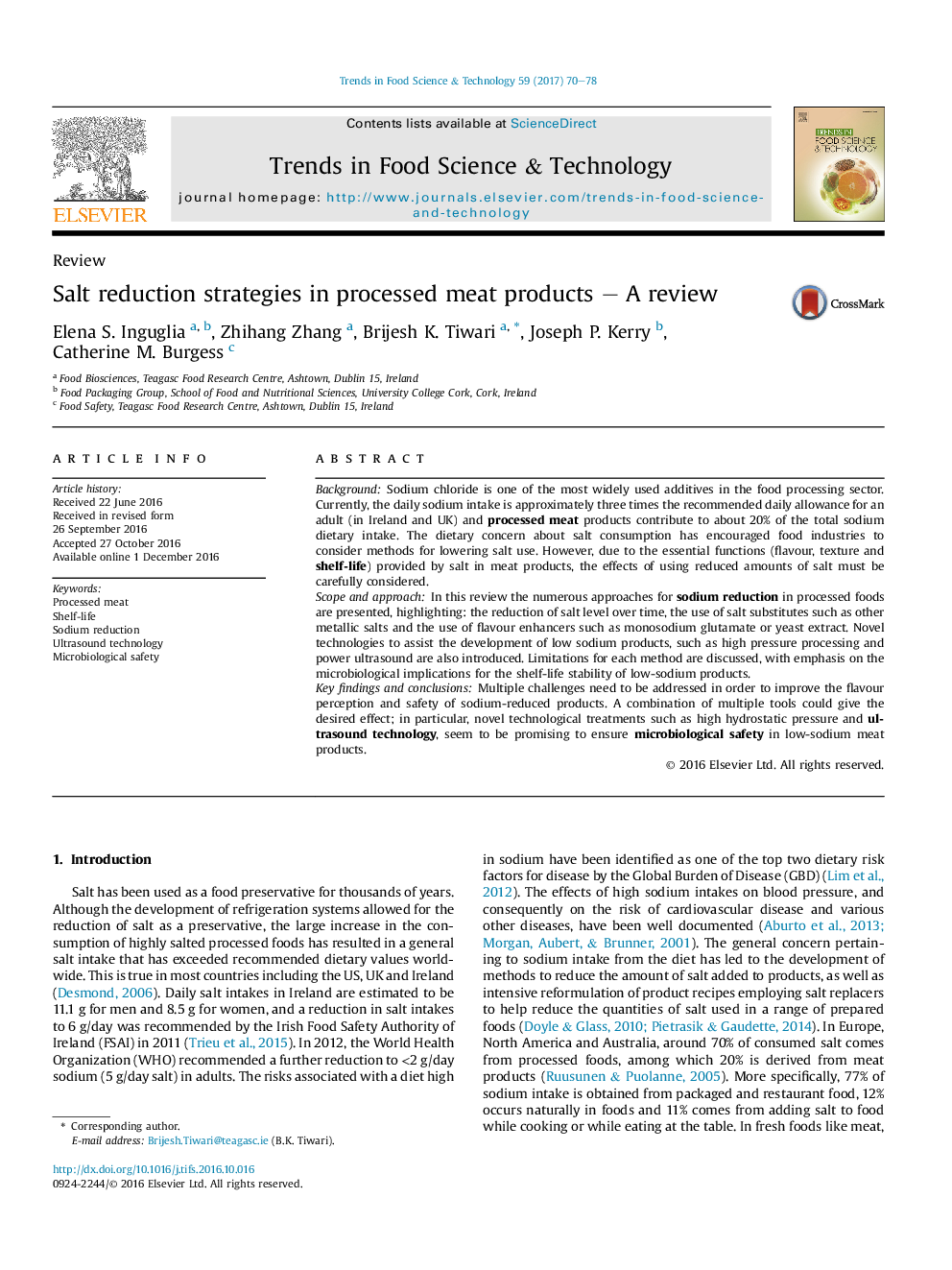| کد مقاله | کد نشریه | سال انتشار | مقاله انگلیسی | نسخه تمام متن |
|---|---|---|---|---|
| 5523761 | 1546120 | 2017 | 9 صفحه PDF | دانلود رایگان |

- Lower salt concentration in processed meat products may impact quality parameters and shelf-life of the products.
- Response to salt reduction is product-specific. Major constraints are given by consumer acceptance.
- Lactates can effectively control bacterial growth but have negative consequences on flavour and texture of the products.
- New processing technology can enhance salt uptake while ensuring microbiological safety.
BackgroundSodium chloride is one of the most widely used additives in the food processing sector. Currently, the daily sodium intake is approximately three times the recommended daily allowance for an adult (in Ireland and UK) and processed meat products contribute to about 20% of the total sodium dietary intake. The dietary concern about salt consumption has encouraged food industries to consider methods for lowering salt use. However, due to the essential functions (flavour, texture and shelf-life) provided by salt in meat products, the effects of using reduced amounts of salt must be carefully considered.Scope and approachIn this review the numerous approaches for sodium reduction in processed foods are presented, highlighting: the reduction of salt level over time, the use of salt substitutes such as other metallic salts and the use of flavour enhancers such as monosodium glutamate or yeast extract. Novel technologies to assist the development of low sodium products, such as high pressure processing and power ultrasound are also introduced. Limitations for each method are discussed, with emphasis on the microbiological implications for the shelf-life stability of low-sodium products.Key findings and conclusionsMultiple challenges need to be addressed in order to improve the flavour perception and safety of sodium-reduced products. A combination of multiple tools could give the desired effect; in particular, novel technological treatments such as high hydrostatic pressure and ultrasound technology, seem to be promising to ensure microbiological safety in low-sodium meat products.
Journal: Trends in Food Science & Technology - Volume 59, January 2017, Pages 70-78